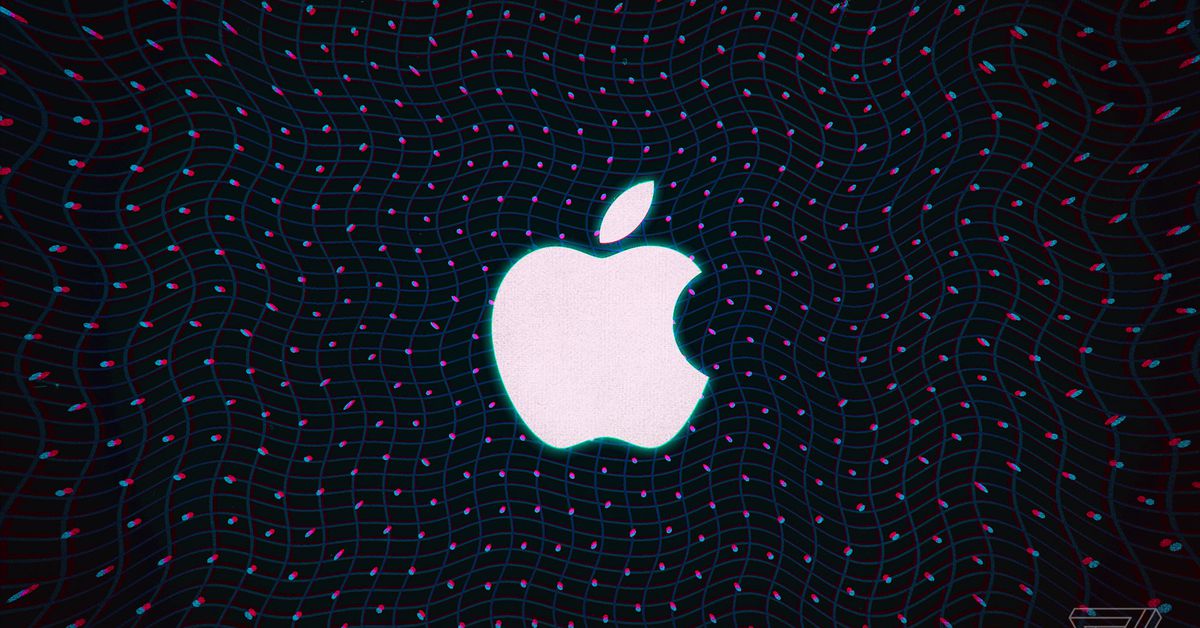
Apple’s rumored AR/VR headset is designed to rely on another device, and may have to offload more processor-heavy tasks to a connected iPhone or Mac, according to a report from The Information. Apple is reportedly working on a custom chip for the headset, an SoC that’s intentionally missing capabilities found in Apple’s other processors.
While the new chip reportedly doesn’t have Apple’s neural engine, which handles AI and machine learning, it’s reportedly designed to be better at wirelessly sending and receiving data, and compressing/decompressing video than traditional chips, which makes sense if the headset is designed to stream data from another device rather than doing the heavy processing itself.
The Information’s sources say it’s designed to be as power-efficient as possible for maximum battery life, something that both removing unused parts of the chip and streaming data from another device might help with. For wearable technology, like a watch or set of glasses, there’s always been a delicate balance between battery life and performance/capability. The original Apple Watch handed off many tasks to a connected iPhone, though Apple was eventually able to make its onboard processor powerful enough to handle many of them.
If the idea of Apple’s headset relying on a separate device sounds familiar, it might be because of this 2020 Bloomberg report, which mentioned that earlier versions of the headset were meant to work with a separate “stationary hub, which in prototype form resembled a small Mac,” until Jony Ive stepped in to say that it should be self-contained and Tim Cook sided with his design chief.
Ive no longer works for Apple, but that doesn’t necessarily mean Apple’s going back to a bulky or stationary hub: The Information reports the AR/VR headset still has its own CPU and GPU inside, and suggests it might be able to communicate with a phone or tablet or even work in a basic stand-alone mode. Some of Apple’s devices, like the Apple Watch, can still perform basic tasks in low battery mode.
The Information also reports that the device will have an “unusually large” image sensor, as big as one of the headset’s lenses, which has apparently been difficult to manufacture. It hasn’t shown up in previous leaks, but the publication says it’s designed to “capture high-resolution image data from a user’s surroundings for AR”. That might come in handy considering the headset is reportedly both an AR and VR device — since it’s difficult to do VR without completely obscuring the user’s view, and difficult to do AR without the user being able to see the outside world, the image sensor could be meant to provide a view of the user’s surroundings from inside the headset — similar to Oculus’ passthrough view, but perhaps at higher quality.
While rumors about Apple working on an augmented reality device have been around for years, the idea is still coming into focus. Noted analyst Ming-Chi Kuo has predicted that we’d see a “helmet-type” headset in 2022, but The Information says that the custom chips for the headset won’t be ready for mass production for at least a year. If that’s correct, even the best-case scenario would be an extremely tight turnaround to get a product out the door by the end of 2022, though that might still be possible if the first version is aimed at developers or a very limited number of early adopters. The Information says that the sleeker glasses model could come out as soon as 2023, while Kuo predicts mid-2025. Unlike the “helmet-type” headset, the glasses device is rumored to be exclusively for AR.
As for what the headset will actually do, Apple CEO Tim Cook has long enthused about AR and how it will “transform the way you work, play, connect and learn,” and let people have “enhanced” conversations. Beyond that, we don’t really have a clear picture of what kind of AR/VR features or interface the company wants to implement. Without that, it’s hard to guess whether the device having to offload processing onto something else is destined to be just a quirk of early models, or a design decision that will stick around for years.
Article From & Read More ( Apple’s rumored AR/VR headset might rely on a nearby iPhone or Mac for processing - The Verge )https://ift.tt/2WUdB3j
Technology
Bagikan Berita Ini














0 Response to "Apple’s rumored AR/VR headset might rely on a nearby iPhone or Mac for processing - The Verge"
Post a Comment